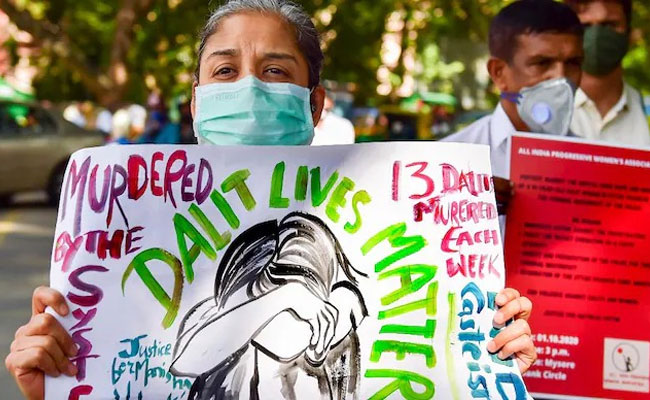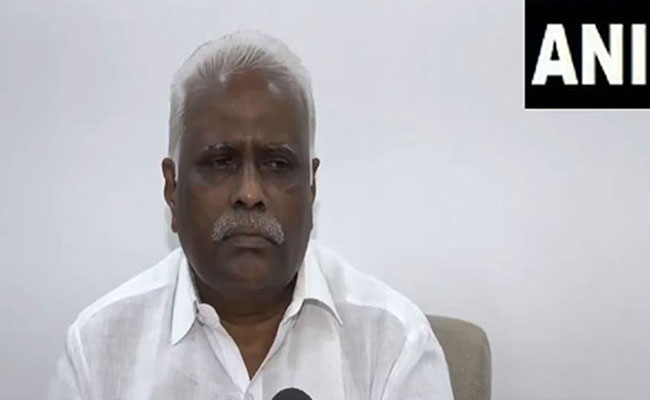Bengaluru (PTI): The Propulsion Module (PM) of Chandrayaan-3 has been moved from an orbit around the Moon to an orbit around Earth, ISRO has said, terming the operation a unique experiment.
The primary objective of the Chandrayaan-3 mission was to demonstrate a soft landing near the lunar south polar region and perform experiments using the instruments on the 'Vikram' lander and the 'Pragyan' rover.
The spacecraft was launched on July 14, 2023, on board the LVM3-M4 vehicle from the Satish Dhawan Space Centre (SDSC-SHAR).
On August 23, the Vikram lander made its historic touchdown on the Moon and subsequently, the Pragyan rover was deployed.
The scientific instruments in the lander and rover were operated continuously for one lunar day as per the defined mission life.
"The mission objectives of Chandrayaan-3 have been completely met," the Indian Space Research Organisation (ISRO) said in a statement.
For the Propulsion Module, the main objective was to ferry the lander module from the Geostationary Transfer Orbit (GTO) to the final lunar polar circular orbit and separate the lander, it said.
After the separation, the Spectro-polarimetry of HAbitable Planet Earth (SHAPE) payload in the PM was also operated, the space agency said.
The initial plan was to operate this payload for about three months during the mission life of the PM. The precise orbit injection by LVM3 and optimal earth or lunar burn manoeuvres resulted in the availability of over 100 kg of fuel in the PM after over one month of operations in the lunar orbit, it added.
ISRO said that it was decided to use the available fuel in the PM to derive additional information for future lunar missions and demonstrate the mission operation strategies for a sample return mission.
To continue the SHAPE payload for earth observation, it was decided to re-orbit the PM to a suitable earth orbit. This mission plan was worked out considering collision avoidance such as preventing the PM from crashing onto the Moon's surface or entering into the Earth's Geosynchronous Equatorial Orbit (GEO) belt at 36,000 km and orbits below that, the statement said.
Considering the estimated fuel availability and the safety of the GEO spacecraft, the optimal earth return trajectory was designed for October 2023.
The first maneuver was performed on October 9, 2023, to raise apolune altitude to 5,112 km from 150 km thus increasing the period of orbit from 2.1 hours to 7.2 hours. Later, considering the estimate of available propellant, the second manoeuvre plan was revised to target an Earth orbit of 1.8 lakh x 3.8 lakh km.
The Trans-Earthinjection (TEI) maneuver was performed on October 13, 2023. In the post-TEI manoeuvre realised orbit, the PM made four Moon fly-bys before departing the sphere of influence (SOI) of the Moon on November 10.
Currently, the PM is orbiting Earth and crossed its first perigee on November 22 with an altitude of 1.54 lakh km. The orbit period is nearly 13 days with a 27-degree inclination. The perigee and apogee altitude vary during its trajectory and the predicted minimum perigee altitude is 1.15 lakh km, ISRO said.
"Hence as per current orbit prediction, there is no threat of close approach with any operational Earth-orbiting satellites," it said.
As per the plan, the SHAPE payload is being operated whenever Earth is in its field of view. Also, a special operation of the SHAPE payload was carried out on October 28, 2023, during a solar eclipse. The SHAPE payload operations will continue further, the statement added.
"UR Rao Satellite Centre/ISRO's flight dynamics team has developed an analysis tool from first principles for this operation which is being validated through the return maneuvers carried out for the Chandrayaan-3 PM," ISRO said.
According to ISRO, the following are the main outcomes of the return manoeuvres carried out on the PM related to future missions: Planning and execution of trajectory and manoeuvres to return from the Moon to Earth; development of a software module to plan such a manoeuvre and its preliminary validation; planning and execution of a gravity-assisted fly-by across a planet or celestial body; and avoiding uncontrolled crashing of the PM onto the Moon's surface at the end of life of the PM thus meeting the requirements of no debris creation.
Let the Truth be known. If you read VB and like VB, please be a VB Supporter and Help us deliver the Truth to one and all.
Jhansi: A Dalit youngster was assaulted and humiliated by a group of men in a village under Premnagar police station limits on November 22, after being taken away on the pretext of being offered a cigarette. The incident came to wider attention after a video of the assault surfaced on Thursday.
According to the complaint, the youngster was standing near Goswami Restaurant in Rajgarh when Nishant Saxena, Sukrit and Kanishk approached him and asked him to accompany them. He was allegedly taken on a scooter to Saxena’s house, where two others Bhanu Pal and Ravindra were present. The group is accused of beating him with slippers, fists, kicks and sticks, abusing him with caste slurs, recording the assault on video and threatening him with a firearm, The Observer Post reported.
The video shows the youth being repeatedly slapped and kicked, forced to apologise, and made to touch one of the assailants’ feet. It also shows a man, identified as Saxena, pointing a firearm at him and ordering him to undress. The youngster is heard pleading with folded hands, saying he does not want to be taken to the police station.
CO Sadar Ramveer Singh said a case has been registered under sections of the Bharatiya Nyaya Sanhita and the SC/ST (Prevention of Atrocities) Act. He confirmed that three accused Sukrit, Anand Nayak and Kanishk Ahirwar have been arrested, while the main accused, Nishant Saxena, remains absconding.





